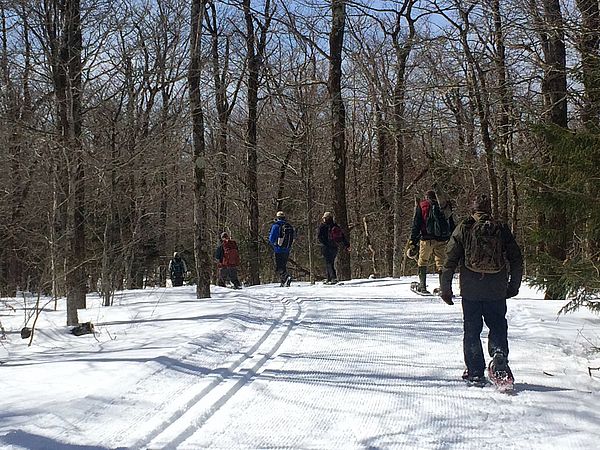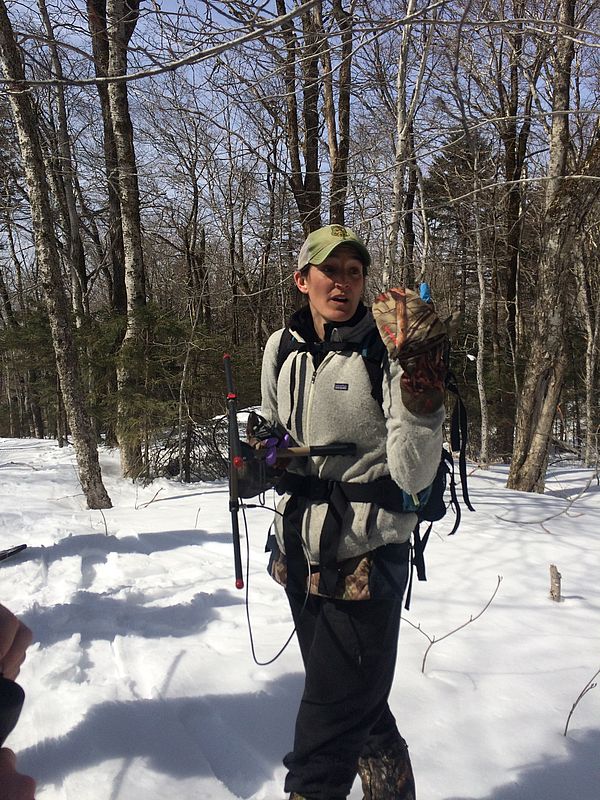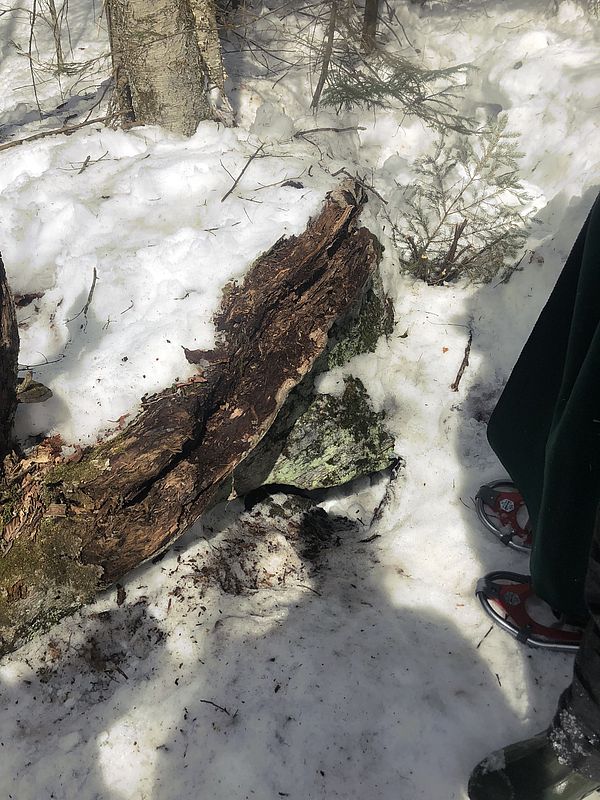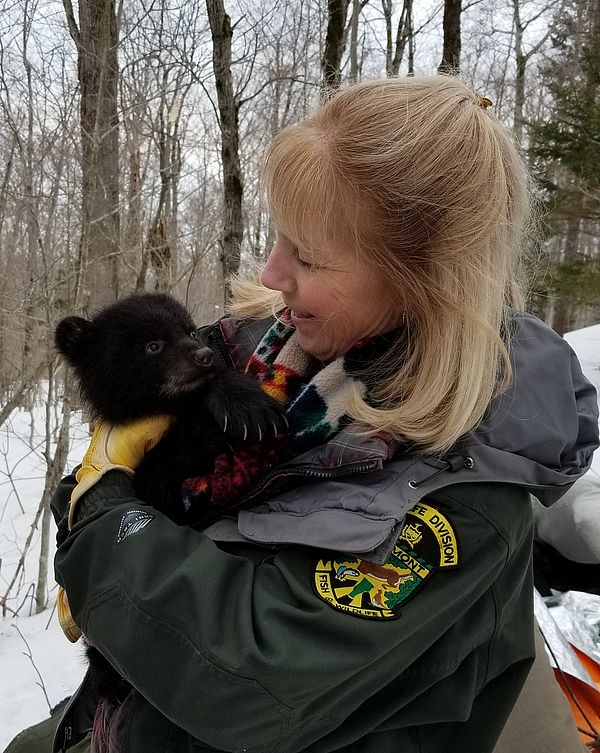On a sunny morning in late March, biologists from Vermont Fish & Wildlife and the US Forest Service and several eager volunteers -- including yours truly -- gathered at the base of Prospect Mountain Ski Area in Woodford, VT. Our destination, the winter den of a mother bear and one of the subjects of Vermont Fish & Wildlife’s Deerfield Wind Black Bear Study.
Broadly speaking, the Deerfield Wind Black Bear Study aims to help wildlife managers in the state understand how development within critical bear habitat affects their continued use of that area. Specifically, this project looks at the effects of the Deerfield Wind Energy Project in southern Vermont on bear habitat use. The Deerfield Wind Energy Project is an industrial wind project that sits within and adjacent to the largest concentration of bear-scarred Beech trees in southern Vermont. Vermont Fish & Wildlife considered this beech population to be a regionally significant food source for bears and recommended the project not be permitted to that location. At the time, no one had ever investigated the effects of industrial wind development on black bear habitat use, so when the Vermont Public Service Board went ahead and granted the permit, they stipulated that Avangrid, the company responsible for the project, must fund a study to evaluate the facilities potential impacts on habitat use by bears.
The resulting study, which began in 2011, has been organized into three phases: a pre-construction phase prior to the construction of the wind facility, a construction phase during construction of the facility which began in the fall of 2016, and a post-operation phase which began in the spring of 2018 when the wind facility began operation. During each phase, Fish & Wildlife biologists have collected data through GPS satellite collars, game trap cameras, and mast (beechnut and acorn) surveys. Since the first bear was fitted with a GPS collar in the fall of 2011, biologists aimed to collar between twelve and fifteen bears per year, with efforts made to collar the same individuals through the length of the study.
Now in the post-operation phase of the study, we were headed up to the den of one of the study’s mama bears — known by project biologists as Prospect — to replace her collar for the coming season. Doing a “den check” allows us to more easily replace the collar of an already collared bear (to avoid dead batteries or a worn out collar when the bear is active) and minimizes stress for said bear. A bonus to den checks is the opportunity to collect data on any cubs that the mother may have with her.
To get up to the den, located no more than 100 yards from on the of the ski areas cross country trails, we piled onto snowmobiles, with some biologists even catching a ride on one of the ski areas grooming machines, and headed up the mountain. It was a beautiful sunny spring day and the excitement of the group was palpable. After unloading our gear and snowshoeing into the den, however, we faced the reality that any wildlife biologist knows all too well -- field work doesn’t always go as planned. Sadly, after checking the den, we realized mama bear was not oriented in her den in such a way that we could safely get her cubs out while we replaced her collar. As always, the safety of bears and scientists takes priority over data, so no collar was replaced that day, though the study will continue with field work this summer.
Now some of you might be wondering how a bear study in southern Vermont relates to the Cold Hollow Region. According to project biologist, Jackie Comeau, “ the added benefit of fitting GPS collars on black bears is that we see not only how they use different habitats in response to development but also how they navigate across the greater landscape. This information should help guide future efforts to make sure we’re maintaining landscape connectivity in a meaningful way for wildlife.” And at Cold Hollow to Canada, supporting humans and wildlife through an intact forested landscape is the name of the game.



